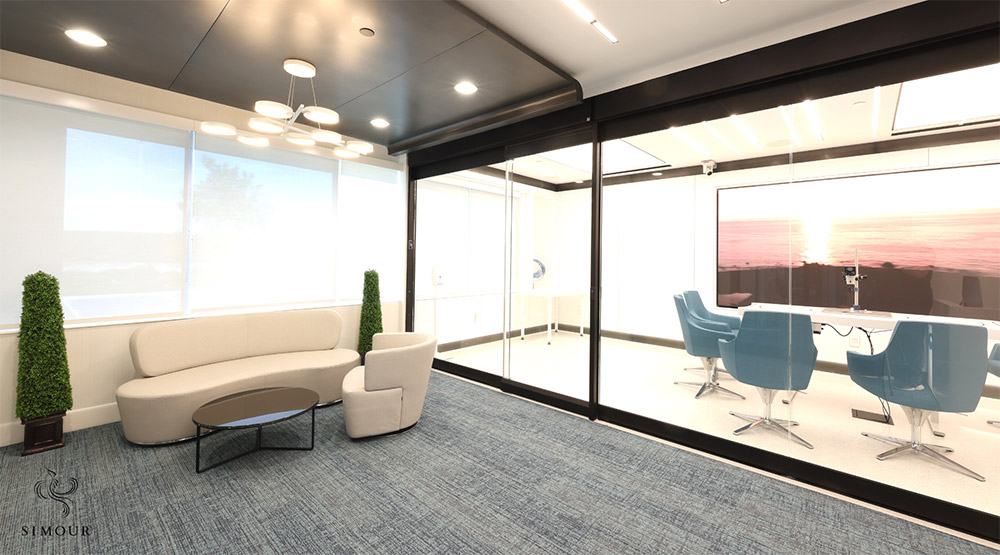“What is the essence of life? To serve others and do good.” – Aristotle
Medical interior design plays an essential role in creating a functional and welcoming environment for healthcare facilities. It is an essential aspect of medical spaces that can have significant benefits for patients, staff, and the overall success of the facility. Primary among those benefits is the creation of a suitable environment – comfortable, functional, and safe for your patients, their families, and healthcare providers alike that experience these healthcare facilities firsthand. There are several more benefits of medical interior design for healthcare facilities, read more below to find out.
1. Promotes Healing
The design of a healthcare facility can have a significant impact on a patient’s overall well-being. A well-designed facility with soothing colors, natural light, and comfortable furniture can evoke a sense of calmness, reduce stress levels, and promote better patient outcomes.
2. Improves Efficiency
Medical interior design can help healthcare facilities optimize their space, leading to increased efficiency and productivity. For example, well-designed waiting areas can reduce wait times, allowing patients to be seen more quickly, and increasing the number of patients that can be seen in a day. A well-designed healthcare facility can help staff perform their duties more efficiently, reducing the amount of time spent on non-patient care tasks, A well-designed healthcare facility can create an environment that is conducive to their work. This can be achieved through the use of ergonomic furniture, efficient layout design, and the incorporation of technology that streamlines workflow processes.
3. Enhances Safety
Medical interior design can help improve patient safety by incorporating features such as non-slip flooring, clear wayfinding, and adequate lighting. A well-designed healthcare facility can help reduce the risk of patient falls, medication errors, and other safety hazards.
4. Increases Patient Satisfaction
A well-designed facility can help create a positive patient experience, leading to higher patient satisfaction rates and increased patient loyalty. Medical interior design can create a calming and welcoming environment that can help reduce stress and anxiety for patients. Leading to better health outcomes. Satisfied patients are always returning clients. Patients are more likely to return to a facility where they feel comfortable and at ease.
5. Attracts and Retains Talent
The design of a healthcare facility can also have an impact on staff morale and job satisfaction. A well-designed facility can create a pleasant work environment that attracts and retains talent, leading to increased staff productivity and lower turnover rates. In the same vein, as you spend so much making patients feel welcome through better interior design, the same goes for your staff feeling important and valued when you make their workplace look amazing too.
6. Infection control
Medical interior design can help reduce the risk of healthcare-associated infections by creating a layout that allows for proper hand hygiene and minimizing the spread of pathogens. This is achieved by integrating and actively implementing sanitation protocols built into the design itself. Locating more hand washing stations or making hand sanitizers available in corridors encourages frequent washing. Add to that, selecting interior finishes and surfaces that are easy to clean and sanitize, as well as the implementation of appropriate HVAC systems and other infection control measures.
7. Maximizes Cost
Effective medical interior design that is made intentionally from the get-go can help reduce operational costs over time by improving staff productivity, minimizing errors, and improving patient outcomes. Design to incorporate as much daylighting can in itself reduce power costs for lighting. In addition, incorporating energy-efficient lighting and HVAC systems can reduce energy costs over time. Onboarding a competent construction team that is well-versed in medical interiors is the key to lessening mistakes and even maintaining the budget from going all over the place. Their experience will insulate your project from surprise costs due to unforeseen circumstances.
8. Improved brand reputation
Patients and visitors are more likely to view a healthcare organization favorably if they have a positive experience in a well-designed facility. It can enhance the brand image of a healthcare facility and help differentiate the facility from its competitors. Through non-verbal communication, it can convey its commitment to providing high-quality care, professionalism, expertise, and quality to patients and the wider community.
Overall, medical interior design plays a vital role in creating a positive healthcare experience for your patients and team alike. By investing in a well-designed medical facility, healthcare providers can enhance patient care, improve staff satisfaction, and increase patient loyalty.
Reaping the benefits of intentional medical interior design is the service we provide for healthcare facility owners and we can do the same for you too. Book one of our complimentary consults with us and we can discuss more about how we can help you in creating a practice that supports your success. Every story is different and we would love to hear yours. Sign up for a design consultation today!




